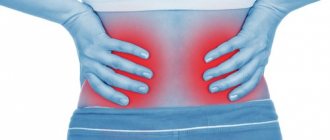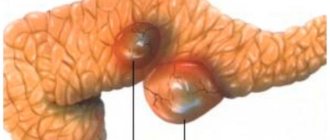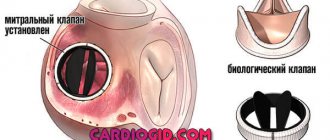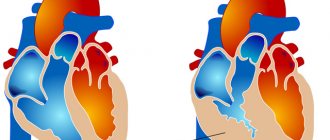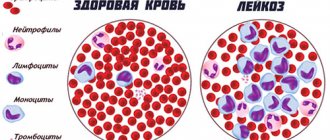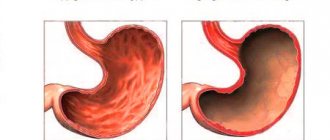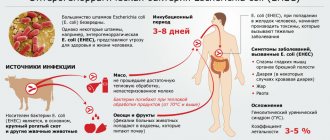Heart failure is associated with decreased heart function. The heart muscle cannot produce the energy needed to pump the required amount of blood throughout the body.
In Russia alone, about 7 million people suffer from heart failure. In people over 70, one in four people are affected, with men typically affected at a much younger age than women. The risk for men is approximately one and a half times higher than for women. In Russia, diseases of the circulatory system are the most common cause of death.
- What is heart failure?
- What causes heart failure?
- What are the types of heart failure and what are their symptoms?
- What classes is heart failure divided into?
- How is heart failure diagnosed?
- How is heart failure treated?
- What are the chances of recovery from heart failure?
Development mechanism
It is difficult to say exactly how and why cardiac dysfunction is formed, because there are a huge number of pathogenetic factors that cause the disorder. Generally speaking, we can imagine an average picture.
The heart is affected by a negative factor. Most often we are talking about consistently high blood pressure, in which rapid depletion of the walls of a muscular organ is observed, or a heart attack (as a result of which cells die and are replaced by scar tissue).
Read more about post-infarction cardiosclerosis and methods of its treatment in this article.
Also, chronic ischemic processes (for example, coronary insufficiency, in which the organ does not receive enough useful compounds and oxygen), atherosclerosis, in which the arteries supplying the heart become clogged and the intensity of trophism (nutrition) decreases, are considered as the primary mechanism, the “trigger” for the onset of pathology. .
Finally, a factor in the development of heart failure may lie in structural changes: against the background of congenital or acquired defects.
In any case, further transformation of the myocardium occurs. Typically, functional cells die and are replaced by scar tissue. The organ cannot contract with sufficient speed and force.
Pumping function decreases. The beats are sluggish, unable to adequately pump blood throughout the body.
The heart itself also suffers, since not enough necessary substances are supplied through the coronary arteries. The circle closes, it can only be broken by prescribing treatment, and then not in all cases. Until a certain point.
The progression of the pathological process, its speed, depends on the specific cause of the onset of the disorder. In some cases the count lasts for months, in others for many years.
It is contraindicated to hesitate in any situation; at the first symptoms you should consult a doctor.
If a disorder was discovered through a routine examination, it is recommended to continue the examination to establish an accurate diagnosis and determine the origin of the disorder.
Nursing process
| Action | Rationale |
| Place the patient on a flat and hard surface, elevating the lower limbs with a pillow or chair. | Improves blood flow to the brain. |
| Ensure complete rest. | The degree of oxygen starvation decreases. |
| Place heating pads on your limbs and wrap your body in a warm blanket. If possible, give the patient hot tea. | The degree of oxygen starvation decreases. |
| Free the patient from tight clothing. Inhale oxygen. | Blood supply to the brain improves, vascular tone increases. |
| Measure blood pressure and pulse every 5 minutes until the doctor arrives. | This will show the dynamics of the patient’s condition to the doctor. |
If the patient loses consciousness, a series of resuscitation actions are required, which include chest compressions and artificial respiration. If medical resuscitation is delayed, the attack may result in death.
Follow-up with a doctor is mandatory. In most cases, collapse is caused by serious illnesses. At home, disruptions in cardiac function can be recorded with a conventional tonometer - mechanical or automatic. By regularly checking your blood pressure and pulse, you can prevent a number of heart diseases and death.
As soon as the syndrome is relieved, the patient is sent for treatment in a hospital setting. There, an experienced cardiologist will prescribe a course of treatment that will prevent the recurrence of the acute condition. If the patient’s condition was stabilized in time and the patient is recovering, after a while he is sent home. The treatment, unfortunately, does not end there.
In addition to the fact that the patient must strictly follow the recommendations of the attending physician regarding the regime of activity and rest, nutrition and lifestyle in general, a nurse will come to him every day. Her task is to monitor the patient’s condition, because even if he misses the appearance of some dangerous symptoms, she will be able to notice them. The responsibilities of the nurse also include injections, measuring the patient’s blood pressure level, and questioning.
Symptoms
External manifestations of heart failure are characterized by abnormalities in the lungs, central nervous system, and cardiovascular structures. The clinical picture directly depends on the stage of the disease. There are three main stages in total.
First stage
Latent or hidden. The pathological process develops, but the patient is unable to detect it.
There are no symptoms of heart failure and are detected only during critical physical exertion.
The average person does not achieve in everyday life even half of the mechanical activity indicator required to identify a problem, therefore the violation is often hidden and does not make itself felt.
Paradoxically, it is athletes and outdoor enthusiasts who are the first to discover the problem. They are not able to do their job well.
There is severe shortness of breath, an increase in heart rate to critical levels, and loss of consciousness is possible at the peak of an attack of failure.
At this stage, treatment makes sense. There is a possibility of complete recovery without consequences for the patient’s body. After correction of the condition, there are no contraindications for sports or active recreation.
Second stage (A)
The clinical picture is present with intense physical activity, but the threshold is much lower than in the early stage.
The clinical picture develops rapidly after a provoking factor (jogging, lifting a load to the floor), but also quickly disappears.
Typical signs of heart failure are chest pain, nausea, shortness of breath and a feeling of shortness of breath, increased heart rate. A cough without sputum production is detected. It occurs regularly and goes away quickly. This is a typical symptom of stagnation in the small (pulmonary) circle.
Read more about coughing in heart failure and how to distinguish it from an infectious one here.
Manifestations develop against a background of relative well-being at rest. At this stage, there is the possibility of a complete cure, because there are no critical changes in the myocardium yet.
Sports and intense physical activity are excluded. Light therapeutic exercises are possible. The issue is decided at the discretion of the doctors.
Second stage (B)
Symptoms of heart failure at the subcompensated stage are already noticeable even to the naked eye.
It is difficult to help radically, but it is still possible, but it will require a lot of effort on the part of doctors and the patient himself.
The blood flow in the small and large circles is disrupted, that is, the entire cardiovascular system suffers at once, this is dangerous because it can lead to cardiac arrest, a major heart attack, or stroke.
Among the clinical signs:
- Chest pain. Moderate to low intensity. Pressing, burning. Bursting. This type of discomfort directly indicates ischemic processes and insufficient quality trophism.
- Dyspnea. The problem is observed even at rest. The person is unable to walk normally, walking becomes unbearable. Not to mention climbing stairs or anything else. The question is often raised in the disability group.
- Increased liver size. Subjectively, it feels like a fullness in the right side, under the ribs. Pain syndrome is possible. Weak, aching.
- Cough. Unproductive, present almost constantly or occurs frequently, regularly. At first there is no sputum, but as it progresses there are episodes of hemoptysis. The separation of liquid connective tissue directly indicates stagnant processes in the small circle. This is an extremely alarming sign and will intensify as the disease progresses.
- Gurgling rales in the lungs when auscultated with a stethoscope. They can be noticeable without a special device.
- Swelling of the limbs. The legs are mostly affected (more details in this article). Then the hands and face are involved in the process.
Due to liver problems, the volume of the abdomen increases. The so-called ascites begins. Accumulation of fluid in the peritoneum, which can also be attributed to edema.
- Impaired consciousness. Due to poor oxygen supply to the brain, there is a high risk of fainting. This is also an alarming sign, because the body is no longer able to compensate for the disorder. The next stage is a stroke, usually extensive.
All these are symptoms of congestive heart failure, the chronic type. The acute version is accompanied by severe chest pain, shortness of breath, and disturbances in the functioning of internal organs.
This is a critical, emergency condition that can lead to the patient's immediate death. In the future, several minutes or, at most, hours, if medical assistance is not provided.
Third stage
Terminal or final. It develops after a few years, if we consider classic cases. In fact, it depends on the individual characteristics of the patient’s body and the reasons for the formation of the disease.
The clinical picture of the decompensated stage remains identical, but the intensity of the symptoms increases significantly. So, shortness of breath reaches a critical level. The patient cannot even take care of himself at home. Getting out of bed is already an achievement.
The issue of disability is resolved unambiguously; the person is completely disabled.
Massive catastrophic changes in internal organs are detected. Hence the symptoms from other systems: liver, brain, kidneys, etc.
In extremely rare cases, this moment is absent, then there is a chance of recovery through radical measures, through a heart transplant. Although they are not great. Otherwise, therapy does not make much sense. The mortality rate is close to 100%.
Near-death state
No one is immune from sudden death due to cardiac arrest. approximately 25% of cases, this occurs without visible preconditions ; the patient does not feel anything. In all other cases, so-called prodromal symptoms or precursors appear, the appearance of which coincides in time with the latent stage of development of AHF.
What are the symptoms before death in acute cardiovascular failure? In half of the cases, before death, an attack of acute pain in the heart region, tachycardia, occurs.
Ventricular fibrillation, presyncope, and severe weakness develop . Then comes loss of consciousness.
Immediately before death, tonic muscle contractions begin, breathing becomes frequent and heavy, gradually slows down, becomes convulsive and stops 3 minutes after the onset of ventricular fibrillation.
The skin turns pale, becomes cold to the touch, and acquires a grayish tint. The patient's pupils dilate and the pulse in the carotid arteries can no longer be felt.
Characteristic signs of left ventricular failure
If you classify symptoms in detail, you need to start from the type of manifestation. As a rule, the onset of a pathological process does not affect all chambers of the organ. At least not right away. It takes time.
When the left parts of the cardiac structures are affected, predominantly disorders of the systemic circulation are observed. That is, both the organ itself and other systems suffer.
Typical clinical signs:
- Chest pain. They do not start immediately, but after some time. At the initial stage there are none.
- Arrhythmias. According to the type of sinus tachycardia. When the frequency of contractions increases significantly. As it progresses, fibrillation and extrasystole are detected.
- Headache, spatial disorientation, neurological dysfunction. Due to poor blood circulation in the brain. The list of symptoms is varied. These are mainly disorders of the sensory organs, and problems with thinking are possible.
- Pain in the right side. Enlarged liver. Accumulation of fluid in the abdominal cavity (ascites). Also yellowing of the skin (not always, relatively rarely), changes in biochemical blood parameters.
- Lower back pain. Increase in the amount of daily urine or its decrease. If there are disturbances in the filtering function of a paired organ of the excretory system, one is replaced by another.
- First, polyuria, when the volume of urine increases significantly, then the reverse process.
- Instability of blood pressure. In the initial stages of heart failure, an increase in the indicator is observed. Then it falls, even in patients with hypertension. This is a negative sign.
Symptoms are determined not only and not so much by the heart itself, but by disruptions in the functioning of other organs and systems. Read more about left ventricular heart failure here.
What awaits patients
Half of all patients diagnosed with heart failure live more than five years. It is difficult to talk about maximum life expectancy; this indicator is determined by many factors. These include the severity of the disease, concomitant background, and the effectiveness of the prescribed treatment. The kind of life the patient leads and much more is of great importance.
If the disease is detected in the initial stage, with the help of therapy the patient’s condition can be completely compensated. At stage 3 of the disease, experts talk about a worse prognosis.
Typical manifestations of right ventricular failure
The disease begins with dysfunction of the small circle. Hence the pulmonary problems.
The list of symptoms is appropriate:
- Dyspnea. The intensity of this depends on the phase of the pathological process. First after strong physical exertion, and closer to the final stage of the disease at rest. A person becomes unable to work and cannot even take care of himself in everyday life.
- Cough. No sputum production. But this is also temporary. Then the blood leaves, which is provoked by stagnation in the small circle. The volumes can be significant.
- Increased pressure in the veins. It is especially noticeable in the example of the cervical vessels, which become inflated and protrude above the surface of the skin.
Heart failure is manifested by both disorders of the greater and lesser circles. However, not at one moment. The order is noted. Apart from acute cases, which are minimal.
Read more about right ventricular HF in this article.
Forecast
With cardiogenic shock, the mortality rate reaches 80%.
The five-year survival rate for patients who have suffered acute heart failure is 50%.
The long-term prognosis depends on the presence of concomitant diseases, the severity of heart failure, the effectiveness of the treatment used, the general condition of the patient, his lifestyle, etc.
Timely and adequate treatment of pathology in the early stages gives positive results and provides a favorable prognosis.
Causes
Development factors are diverse. They are well known to doctors:
- Arterial hypertension. Moreover, the current one has been going on for a long time. Increase in pressure.
- Previous myocardial infarction. The probability of violation is especially high in the first six months or a little more.
- Inflammatory, including autoimmune or infectious processes in cardiac structures. For example, myocarditis or others.
- Congenital or acquired heart defects. Aortic, mitral stenosis, also vascular abnormalities (coarctation of the aorta). There are many of them.
- Diseases of the endocrine system. Diabetes mellitus, low production of thyroid hormones (thyroid gland substances).
- Rarely - heart tumors. Insufficiency is also possible against the background of cancer pathologies of any localization at advanced stages.
Patients prone to smoking and alcohol abuse are in the high-risk category. Experienced drug addicts. Quitting a bad habit can make a big difference.
Diagnostics
The examination is carried out by cardiology specialists. You need to act quickly so as not to miss the right moment to correct the condition. The list of events is approximately the same.
- Oral questioning of the patient. To create a complete clinical picture and put forward hypotheses regarding the diagnosis.
- Anamnesis collection. Past illnesses, lifestyle, habits, family history and other factors are subject to clarification.
- Blood pressure measurement. Also heart rate.
- Daily assessment of the same indicators using Holter monitoring. Gives a lot of information.
- Electrocardiography. To determine the functional state of the heart. Requires careful decoding. In the hands of a competent doctor it is a valuable source of useful information.
- Echocardiography. Makes it possible to visualize tissues of cardiac and surrounding structures. Diagnostics cannot do without this. Makes it possible to assess the degree of organic changes.
- Specialized tests. Used for early detection of cardiac failure. They are physical in nature and include loads (squats). Therefore, they are contraindicated at advanced stages, starting from the second. Complications are likely.
- Biochemical and standard clinical blood tests.
- Ultrasound of the liver, kidneys. To assess the degree of involvement of these organs in the pathological process.
- MRI of the heart and brain if necessary. Rarely required.
- Duplex scanning of cerebral structures. To understand how well they are supplied with nutrients and oxygen.
- Chest X-ray. As part of the diagnosis of lung function disorders.
This is not an exhaustive list. The disease is multifaceted, therefore, at the discretion of the specialist, the list can be changed in one direction or another.
Treatment methods
The therapy is conservative. Medicines from several pharmaceutical groups are used:
- Cardiac glycosides. Allows you to normalize myocardial contractility. At the same time, they reduce the muscle organ’s need for oxygen, enhance metabolic processes, increasing, figuratively speaking, efficiency when using available resources. Digoxin, tincture of lily of the valley and others are actively prescribed. According to indications.
- Antihypertensive medications. ACE inhibitors (Perindopril), beta blockers (Anaprilin, Carvedilol), calcium antagonists (Diltiazem, Verapamil), centrally acting agents (Moxonidine) and others. If you have high blood pressure.
- Diuretics. Diuretics when the situation requires it. For example, when the heart and kidneys fail and swelling begins.
Removing excess fluid allows you to reduce the load on all organs. This is a necessary part of treatment. But you cannot consume such medications for a long time.
Loop diuretics (Furosemide, Lasix) are used as emergency medications.
In other situations, it is sufficient to prescribe thiazide or potassium-sparing tablets (Veroshpiron, Spironolactone, Hydrochlorothiazide)
- Means for normalizing metabolic processes in the heart, cardioprotectors. Mildronate, Riboxin.
Surgical therapy is required if there are structural or anatomical disorders. For example, prosthetics of valves, blood vessels, artificial dilatation of arteries when they are narrowed, and other options.
The last resort is a heart transplant. The operation is complex, but has extremely high survival rates. About 10% of all patients die. However, the problem is the lack of donors.
In the future, as an auxiliary measure, it is recommended to change lifestyle: normalize body weight, adjust the diet under the supervision of a nutritionist, give up alcohol and tobacco products, and limit physical activity. If possible, you should also avoid stressful situations.
Attention:
Changing your diet should be carried out under the supervision of a doctor. Heart failure is demanding in terms of microelements and essential substances. You can only make things worse on your own.
Prevention
In order to prevent the development, as well as to prevent the progression of acute heart failure that has already occurred, it is recommended to adhere to a number of measures:
- timely consultation with a cardiologist if cardiac pathology is suspected;
- sufficient physical activity (regular, but not exhausting);
- balanced diet;
- body weight control;
- timely treatment and prevention of diseases that can lead to acute heart failure;
- rejection of bad habits.
Video from YouTube on the topic of the article:
Possible consequences
The main complications are cardiac arrest, massive heart attack, stroke. The end result is the death of a person or at least severe disability.
Heart failure is a dangerous and complex pathology. She does not tolerate delays or frivolous attitudes. If you do not react in time, there will be no chance of recovery. Therefore, it is necessary to contact a cardiologist or at least a therapist once every six months to undergo preventive examinations.
Bibliography:
- Russian Cardiological Society. Clinical recommendations. Chronic heart failure (CHF).
- Monthly scientific and practical journal Cardiology. Volume 58.
- Republican Center for Health Development of the Ministry of Health of the Republic of Kazakhstan. Chronic heart failure Clinical protocols of the Ministry of Health of the Republic of Kazakhstan.

